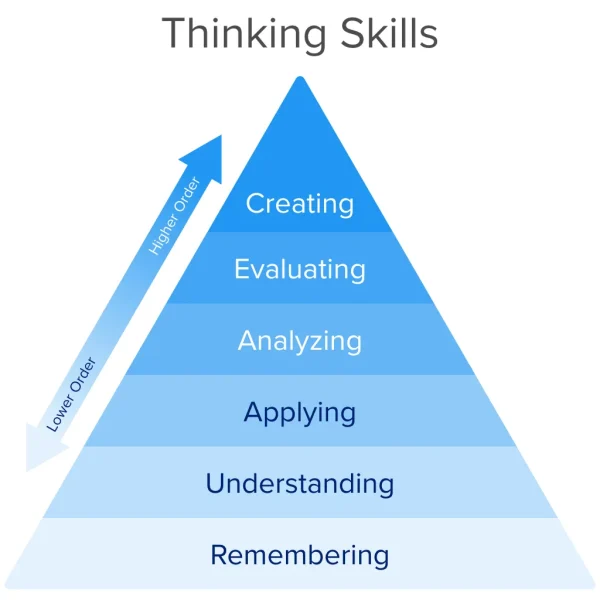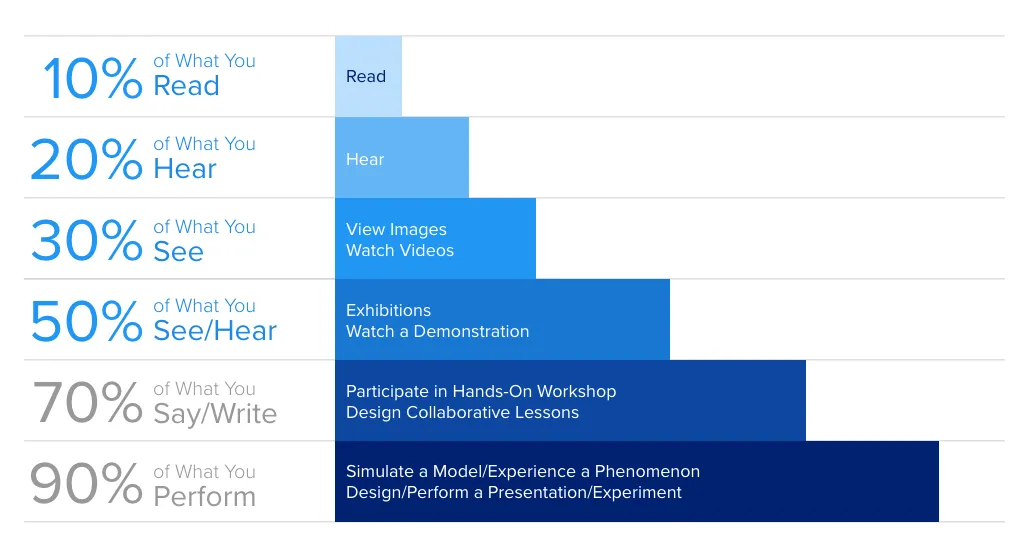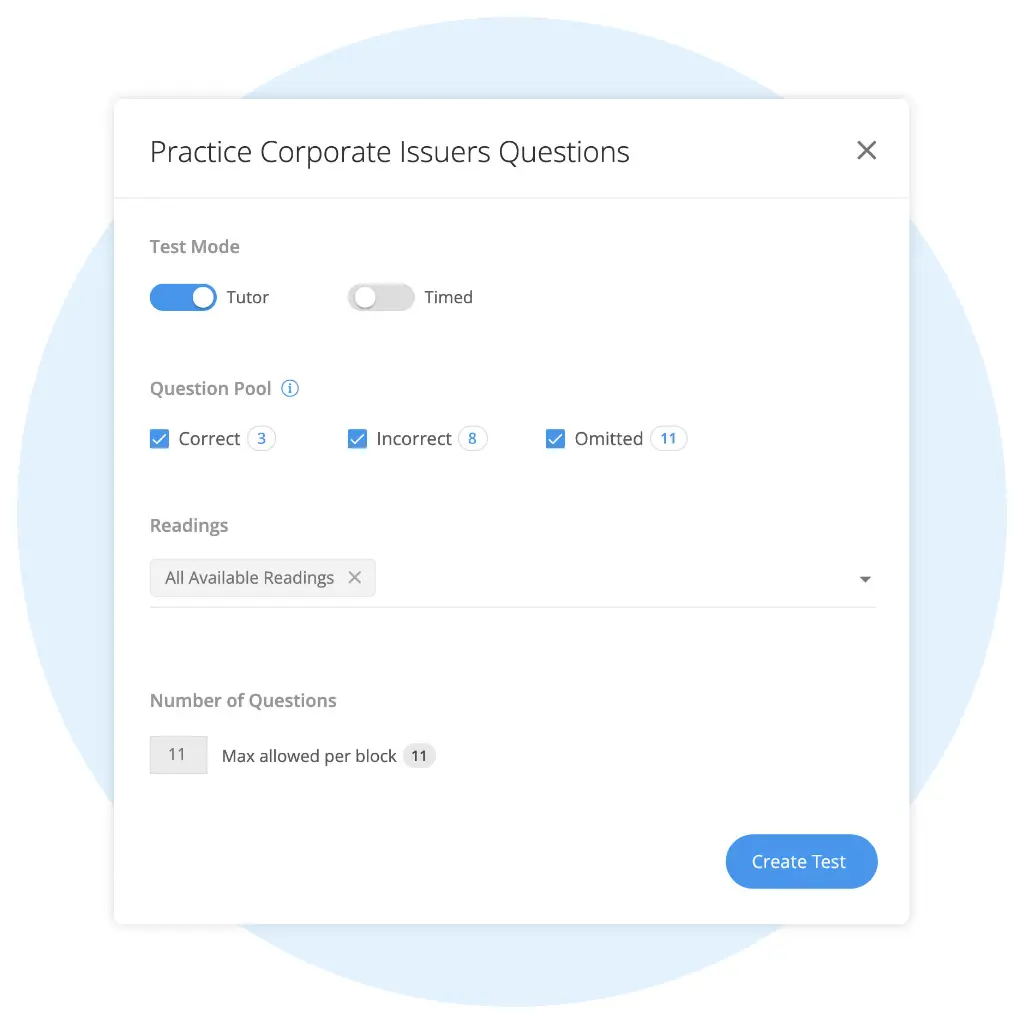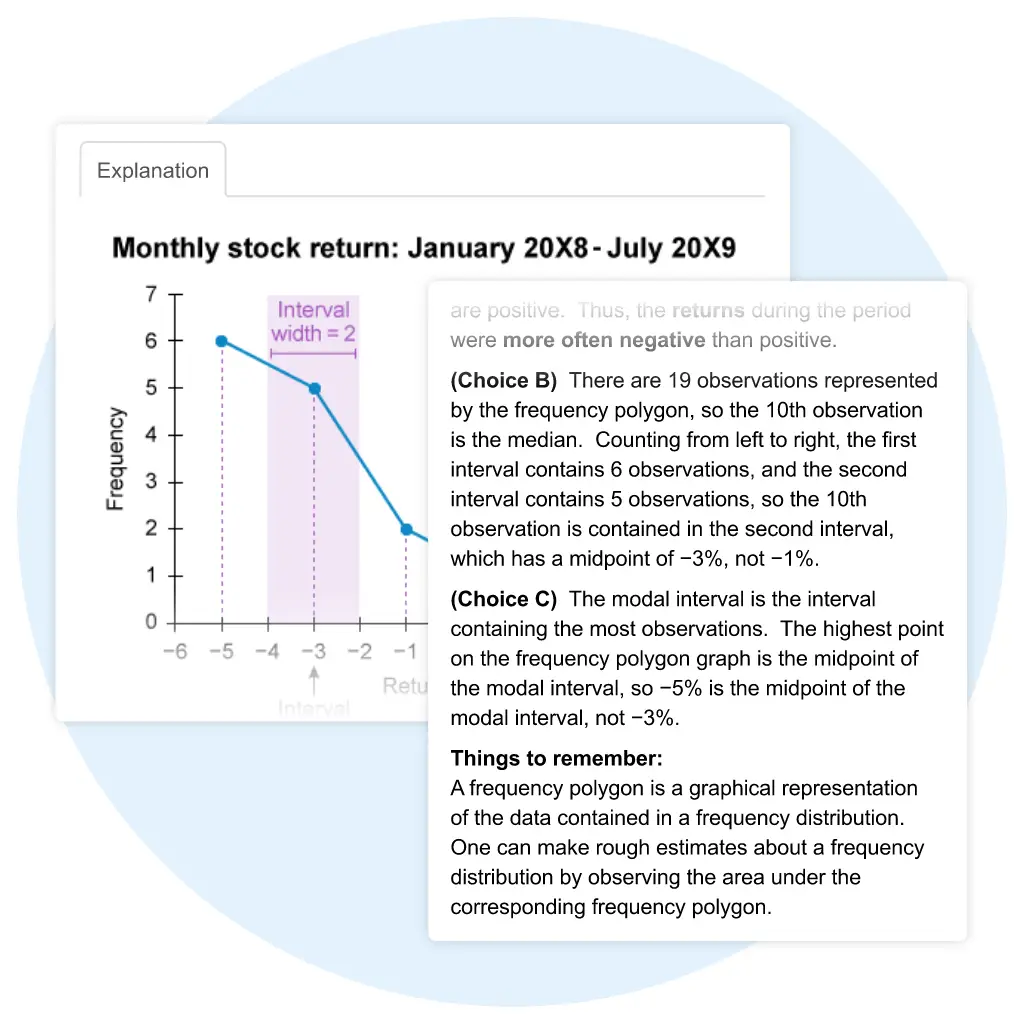Active Learning
The UWorld System for Your CFA® Prep
Given the limited time that you have left to study and the intensity of the syllabus for the CFA® exam, one needs to sit back and rethink the learning strategies before, rather than sitting on it when the exam date is closer. With UWorld CFA products that incorporate Active Learning into every aspect of your preparation, the chances of you missing out or failing to recall during the exam day are extremely low.
It is crucial to remember that even though the active-learning strategy greatly increases retention, there is still a potential that you may forget some information. This is normal and can be readily remedied by using a CFA study plan or study guide.
Active Learning: Learning by Engaging
But what exactly is Active Learning? Active Learning is a study approach designed to help examinees master the concepts tested on high-stakes exams. As the name suggests, this study approach requires active participation by the student, as opposed to passive learning exercises such as sitting through the classroom or live lectures. Multiple studies have established empirical data that reinforces the merits of this study method. According to a study on learning-centered approaches to education, students learn more when they participate in the learning process.
A Harvard study on active learning suggests that students learn more when they take an active role in their education than when they use passive strategies such as traditional lectures. This study used standard lecture methods taught by an experienced instructor for the first eleven weeks of a fifteen-week class. In the twelfth week, half the class was assigned to a classroom involved in active learning, while the other half continued with lectures. Both groups continued to learn identical class content, either through active engagement or lectures. Following each class, students were surveyed on their perceptions of learning and quizzed about the material. The study showed that students perceived the lectures as more effective but learned more from the active-learning methods.
Active Learning for the CFA Prep: Attaining the 90% Retention
It's not news that the CFA exam is one of the toughest, and given the extensive curriculum, exam day retention can get tricky. Active Learning is the closest to attaining a 90% retention from different learning styles that act as a catalyst in preparation.
Active Learning can take many forms, follow different models, and serve many instructional goals. Many of these approaches have areas of overlap with each other and draw on similar pedagogies that focus on student-centered instruction and course learning objectives. Active learning promotes problem-solving, critical thinking analysis, and synthesis of information. The importance of active learning is displayed in the graphic below, based on a study by Edgar Dale on teaching.
Active Learning for the CFA Prep: Attaining the 90% Retention
It's not news that the CFA exam is one of the toughest, and given the extensive curriculum, exam day retention can get tricky. Active Learning is the closest to attaining a 90% retention from different learning styles that act as a catalyst in preparation.
Active Learning can take many forms, follow different models, and serve many instructional goals. Many of these approaches have areas of overlap with each other and draw on similar pedagogies that focus on student-centered instruction and course learning objectives. Active learning promotes problem-solving, critical thinking analysis, and synthesis of information. The importance of active learning is displayed in the graphic below, based on a study by Edgar Dale on teaching.
Active Learning Strategies
One of the most critical aspects of preparing for the CFA exam is successfully retaining all the topics, formulas, and concepts studied until the exam day. With the help of various active learning techniques that at most demand only a minute or two, you can check your understanding of recent material, practice a skill, or identify gaps in your preparation. Here are some of the techniques:
Real-world connections draw from or upon actual objects, events, experiences, and situations to effectively address a concept, problem, or issue. It involves learning that allows students to actually experience or practice concepts and skills instead of theoretical or idealistic learning.
This approach utilizes concepts, problems, or issues similar to ones you have encountered or are likely to encounter. It brings the relevance, complexity, and motivation of the real world to learning, thus making many concepts easy to understand.
Visual organizers are ways in which material (concepts, facts, ideas) can be represented in a visual format. Examples include showing a sequence as a flowchart or a classification, the system as a tree structure rather than just describing them in words.
Visual organizers provide visual scaffolds that positively affect student understanding, vocabulary development, acquisition, and retention of knowledge.
A concept map is a visual representation of the relationships between different ideas or concepts. It is a diagram that shows how different concepts are related to one another and how they fit together to form a coherent whole.
Concept maps can be used to organize and represent knowledge, to brainstorm and plan, and to clarify and communicate ideas. They are commonly used in education to help students organize and understand complex information, and in business to help teams develop and communicate ideas.
How Do UWorld CFA Prep Facilitate Active Learning Methods?
At UWorld, we believe that by using the active-learning method in designing our exam prep products, we enable students to apply practical knowledge to succeed in their exams and demonstrate a readiness to begin practicing competently in their corresponding fields of study. We are further convinced that this active-learning approach maximizes engagement, eliminates cramming, and prepares students and professionals for success in their exams and careers.
Here's how our products run in parallel with the three core pillars of Active Learning.
Learn by Doing
UWorld CFA question bank (QBank) features a large volume of questions from which students can create unlimited online practice tests that mimic the real exam. Also, our subject matter experts write our content at or above exam-level difficulty so students can practice challenging questions repeatedly, boosting their readiness on exam day. And by simulating the real test in exam-like conditions, students build the required stamina and confidence as they become more familiar with the experience and know what to expect when test day arrives.
Focused Learning
Many students struggle with staying organized or keeping up with a study plan over several months. The problem compounds when students attempt to use too many study materials or prep courses, some of which may be unnecessary. At UWorld, we design our QBanks to optimize efficiency. Customizable practice tests and immediate performance metrics allow students to control their study plans. By focusing on the most relevant topics and targeting their weaker subjects, students can study more efficiently without the risk of burning out.
Simplified Learning
The exams we help prepare students are sophisticated and rigorous, requiring hundreds of hours of study time. We design our exam prep products to simplify the learning experience. Our in-depth, yet still concise, explanations and illustrations make difficult concepts easy to understand while increasing retention and comprehension. Our explanations for both correct and incorrect answer choices give students a thorough understanding of critical underlying concepts and minimize the need for memorization.
Why You Should Go With UWorld CFA Study Prep
At UWorld, we pride ourselves on being the standard of excellence in creating premium online learning tools and high-stakes exam preparation solutions; our extensive CFA Level 1 study guide and CFA Level 2 Study Schedule are a testament to the meticulousness that goes behind developing each product. Whether the objective is to achieve your max score on an entrance exam or obtain a license or certification, we apply the same approach to developing our products. Repetitive as it may be (also one of the core principles of active learning), the benefits of active learning are aplenty apart from helping students understand the concepts.
Reinforcement
You learn better by doing, so hands-on, active participation is the most effective means of strengthening understanding.
Feedback
Active participation in the learning process provides you with immediate and frequent feedback.
Processing
Thinking and talking about the material enables you to process and internalize the information more effectively.
Connections
Student motivation increases by creating more personal connections to the material through active engagement.
Collaboration
You can practice critical skills, such as collaboration, through group work and paired activities.
Interaction
Sense of community grows via interactions by actively learning together via problem-solving and group tasks.
We begin with the end in mind, which is the test taker's success and mastery of the concepts tested. Then we employ a meticulous process to develop comprehensive, high-quality exam prep content testing high-yield concepts. We refer to this process as The UWorld Difference. At the core of what makes UWorld different is, in fact, our active-learning method.
Active Learning + UWorld Study Prep: The Answer to Passing CFA L1 and L2 Exam?
Following the logic supported by the empirical evidence of these research studies, all our exam prep products —CFA mock exams, CFA flashcards, and Question Banks— are designed with active-learning tools to imprint high yield concepts upon learners. This intentional design principle ensures that the experience of using our materials to prepare for a high-stakes exam is not reduced to simply relying on tips or gimmicks to game the exam but rather mastering key concepts to benefit test-takers in their careers.

Frequently Asked Questions
Can I pass the CFA® exams just by using the active learning method?
It is possible to pass the CFA exams using the active learning method, but it is not guaranteed. Ultimately, we believe that, as observed in competitive sports, when preparing for a difficult, high-stakes exam, how you practice is how you’ll perform. So, by using active learning to practice thousands of questions over and over again in exam-like conditions, when you sit down on test day, the actual exam will feel like practice.
The CFA® exams are highly rigorous and require a significant amount of time and effort to prepare for. Active learning can be a useful tool to help you understand and retain the material, but it is not a substitute for thorough study and practice. In order to pass the CFA® exams, you will need to put in the necessary time and effort to thoroughly prepare, using a combination of study materials, practice exams, and active learning techniques.
Do UWorld Flashcards promote active learning?
Using the UWorld CFA flashcards engages an active learning and recall process, aiding overall memory recall and retention most effectively. With each flashcard, the user can rate (Again/Good/Easy) how well they understand the concept, and our algorithm will adapt how often you see specific topics based on your proficiency.
What are some myths about active learning?
- Active learning is only for certain subjects or age groups – In reality, active learning can be used in any subject and with students of any age.
- Active learning is only for small group settings – While active learning is often used in small group settings, it can also be effective in large classes.
- Active learning is only for highly engaged students – Active learning can be beneficial for all students, regardless of their level of engagement.
- Active learning is only for hands-on activities – Discussions, debates, and problem-based learning can equally incorporate active learning into the classroom.
- Active learning is only for advanced students – Helps improve critical thinking and deepen understanding of complex concepts in students of all abilities.
References - Supporting Research in Active Learning
Cavenagh, S. (2016). The spark of learning: Energizing the college classroom with the science of emotion. Morgantown, WV: West Virginia Press.
Freeman, S., Eddy, S.L., McDonough, M., Smith, M.K., Okoroafor, N., Jordt, H., & Wenderoth, M.P. (2014). Active learning increases student performance in science, engineering, and mathematics. Proceedings of the National Academy of Sciences 111 (23) 8410-8415.
Henning, J.A., Ballen, C. J., Molina, S. A., Cotner, S. (2019). Hidden identities shape student perceptions of active learning environments. Frontiers in Education 4, 129.
Kuh, G., O’Donnell, K., & Schneider, C. (2017). HIPs at ten. Change, 49(5), 8-16.




